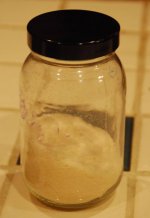And well you should, but as his partner getting freebies, I don't have room for complaints. It was actually more aromatic without further washing.I think Joe can doe better than he did with those solvent washes.... calling you out, Joe!!
He did promise me the next batch would include an additional wash to lighten them, so I'll share those peeectures when ah have mah sample in hand.
I will tell him that you said he should take better care of his parnter......., Hee, hee, hee







